The Common Raven is a trickster who brought fire to humans by stealing it from the sun.
A young Bald Eagle doesn’t need a fishing license.
A raven maniac.

The Common Raven is a trickster who brought fire to humans by stealing it from the sun.

A young Bald Eagle doesn’t need a fishing license.

A raven maniac.
Naturally
The first day of meteorological winter hit on December 1. December is the darkest month. The proverb says, "If December be changeable and mild, the whole winter will remain a child." Each day will continue to be a weather event.
Fox squirrels chased one another. They mate twice a year, typically from December to February and June through July.
I heard great horned owls softly hooting in the night as part of their courtship. The most common owl in Minnesota calls hoo-h’HOO-hoo-hoo before nesting begins in January or February.
I watched and listened to outraged birds. Chickadees, nuthatches, jays and a downy woodpecker flushed a Cooper's hawk from a tree. Four uncharacteristically quiet crows sat out the vocal mobbing, concentrating instead on chasing the flying raptor as it retreated from the yard. The gang of house sparrows perched in arborvitae stayed out of it. Life isn’t perfect but I saw birds. Sometimes that’s enough.
The Minnesota Ornithologists’ Union's Paper Session was virtual
Notes from "Climate Change and Forests" by Lee Frelich, Director, University of Minnesota Center for Forest Ecology. Drought, insect infestation, wind and fire will accompany climate change. There is more of a treed climate in southwest Minnesota now than at the time of European settlement when it was more favorable to the prairie.
High temperatures in March 2012 caused magnolias to bloom in Minnesota. (This writer remembers 81° on March 17 and 80° on March 18 in Rochester). If climate change isn't mitigated, the Boundary Waters Canoe Area will have the climate of Granite Falls by 2070 due to higher temperatures. Deer will replace moose, bobcats will replace lynx, and red-bellied woodpeckers will replace black-backed woodpeckers. Red-bellies are being seen in Ely now. Frelich said, "We have a perfectly good Kansas now. We don't need a second one in Minnesota."
Notes from "Eagles as Ambassadors" by Scott Mehus, Education Director at the National Eagle Center in Wabasha. Scott started the Wintering Golden Eagle Survey in 2005. On the third Saturday of January each year, volunteer citizen scientists drive over 40 counties (5,801 total miles this year) in the blufflands of Wisconsin, Iowa and Minnesota, straddling the Mississippi River from the Hastings-Stillwater area to Dubuque. They counted 119 golden eagles in 2020, 145 in 2019, 62 in 2018, and 44 in 2017. Golden eagles aren't found near water. Scott has found only one golden eagle within 30 feet of the Mississippi River. They feed on rabbits, squirrels and wild turkeys. They survey other birds, too. There were 1,403 bald eagles seen in 2020, 1,392 in 2019, 1,202 in 2018, 893 in 2017, and 1,515 in 2016. Red-tailed hawks: 461 in 2020, 583 in 2019, and 747 in 2018. Rough-legged hawks: 127 in 2020, 124 in 2019, and 131 in 2018. American kestrels: 89 in 2020, 64 in 2019, and 141 in 2018. There were 60 unidentified eagles and 19 red-headed woodpeckers seen in 2020. The golden eagles like goat prairies, which are dry, upland bluff prairies where thermal give lift to eagles saving them energy and haste altitude gain. The goat prairies, named because goats fed on them while cows grazed lower hillsides, also offer access to prey. Red cedar trees have invaded many of the goat prairies. Where do the golden eagles counted by Scott and the squad go? They breed in northern Canada. If you are interested in volunteering for the 2021 Wintering Golden Eagle Survey on Saturday, Jan. 16, email golden@nationaleaglecenter.org.
Q&A
"There was a rather nondescript bird in my yard this summer that wagged its tail when perched. Why did it do that?" It sounds like an eastern phoebe, a flycatcher that is dull in coloration and without bold markings. Gregory Avellis, a California scientist, studied black phoebes to determine if the tail pumping was related to balance, territorial aggression, foraging or predators. It was found the tail fidgeting was a message to predators, letting them know that they'd been spotted and eliminating the element of surprise. A playback of the calls of a Cooper's hawk, a raptor that preys on birds, caused a phoebe's tail-pumping rate to triple.
Thanks for stopping by
"It ain’t what you don’t know that gets you into trouble. It’s what you know for sure that just ain’t so." — accredited to Mark Twain, Josh Billings, Artemus Ward, Kin Hubbard and Will Rogers
"I do not know terns anymore than I know myself. They keep leading me toward any number of questions to which I only receive tangential answers. Still, they have enlarged my sight, my aspirations, my grasp of the earth's great distances. What more do we need to know than that the truth lies not in us alone, but with every other form of life, no matter how insignificant it may seem." — John Hay
Do good.
©Al Batt 2020

The tufts of lengthened feathers on the head of this great horned owl are called plumicorns. Photo by Al Batt
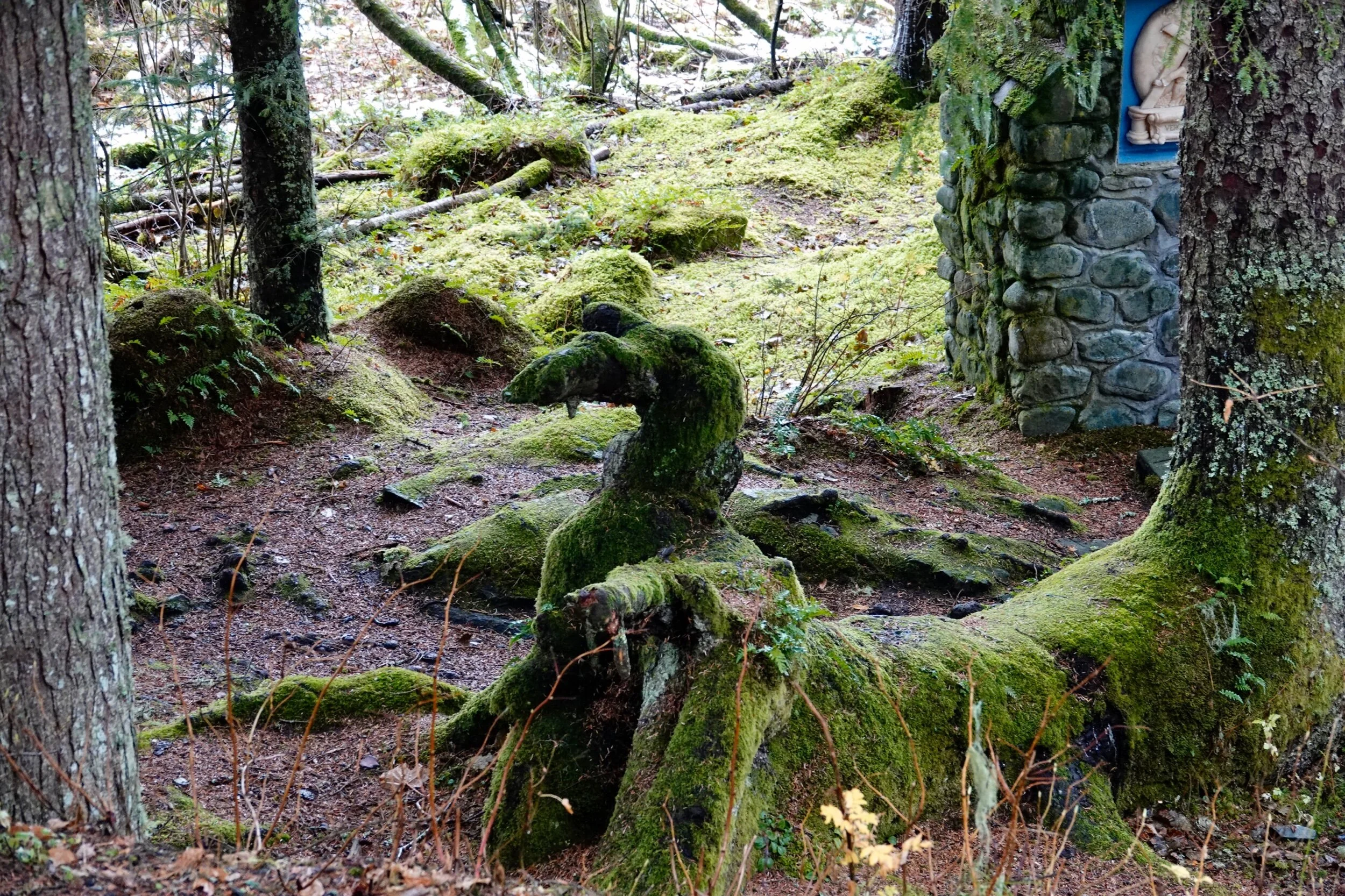
The moss prospers in Juneau, Alaska.

The Eldred Rock Lighthouse located in the Lynn Canal (the deepest fjord in North America). This lighthouse in Southeast Alaska was constructed in 1906. I enjoy seeing it as a measure on my ferry trips between Juneau and Haines.
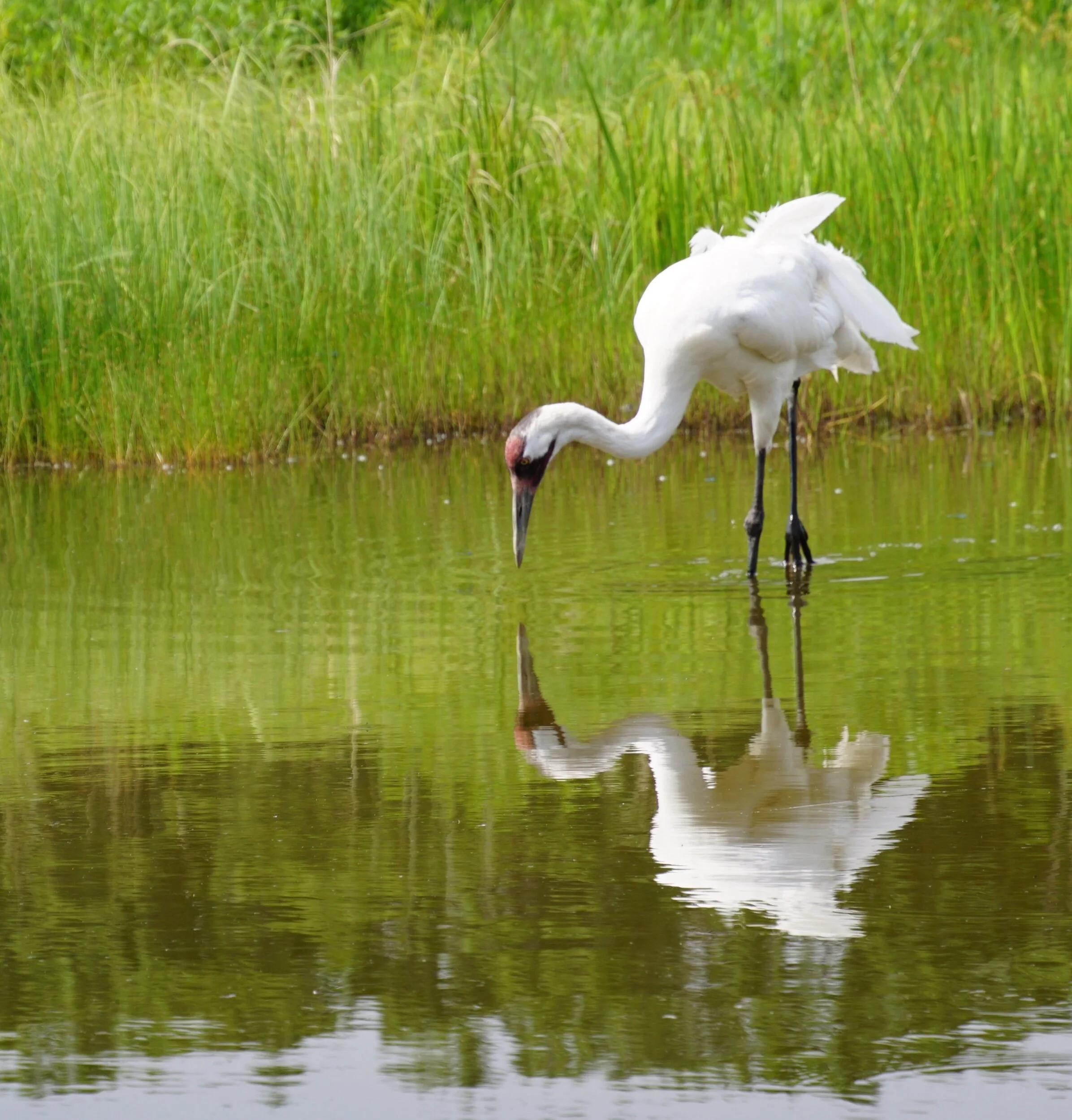
A Whooping Crane participates in a self-discovery class at the International Crane Foundation in Baraboo, Wisconsin.
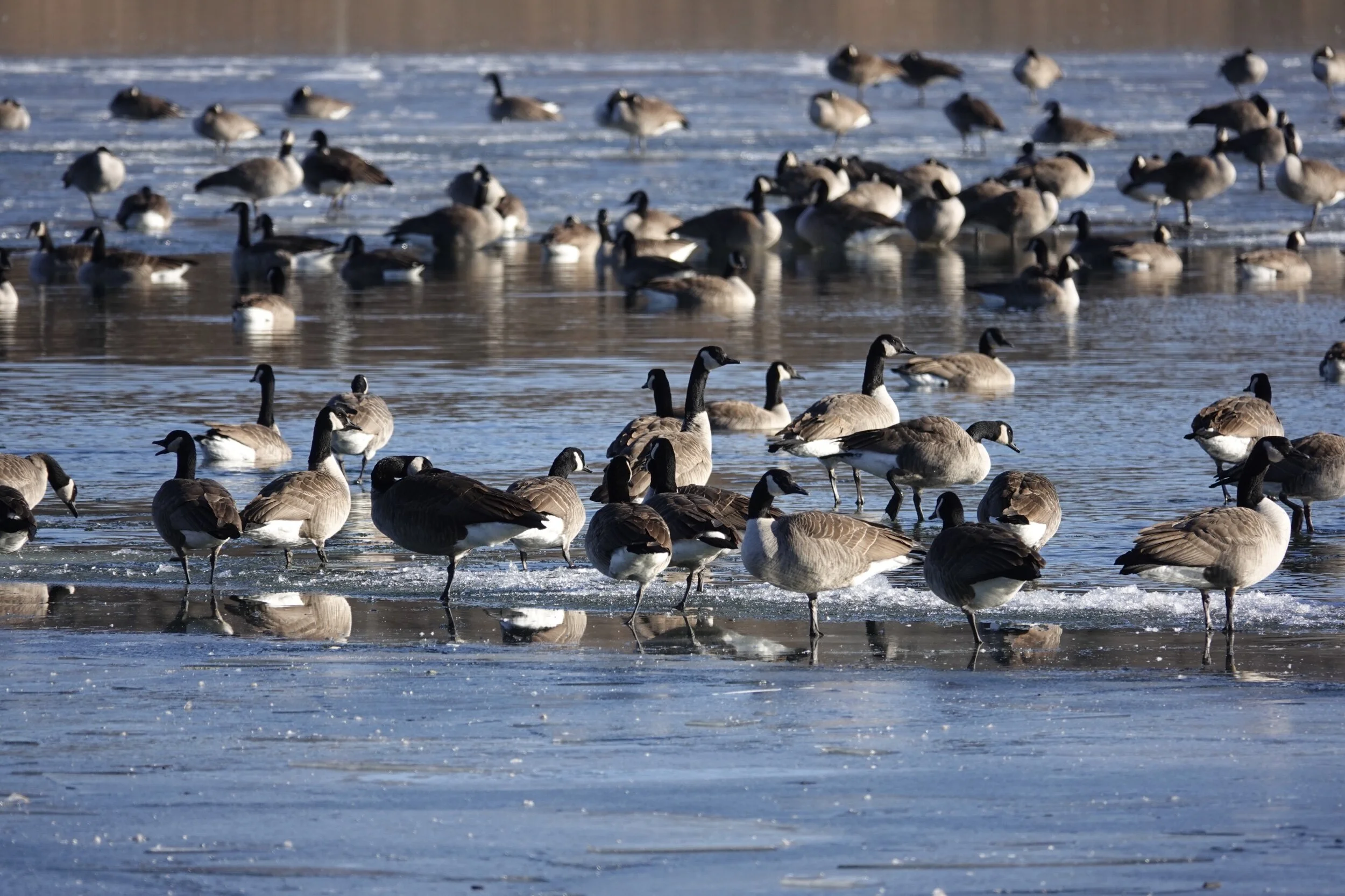
Canada Geese waiting for the wind to change so they can fly to their usual feeding site.

The Alaska Marine Highway is the way to travel. That’s if you’re traveling when it’s traveling.
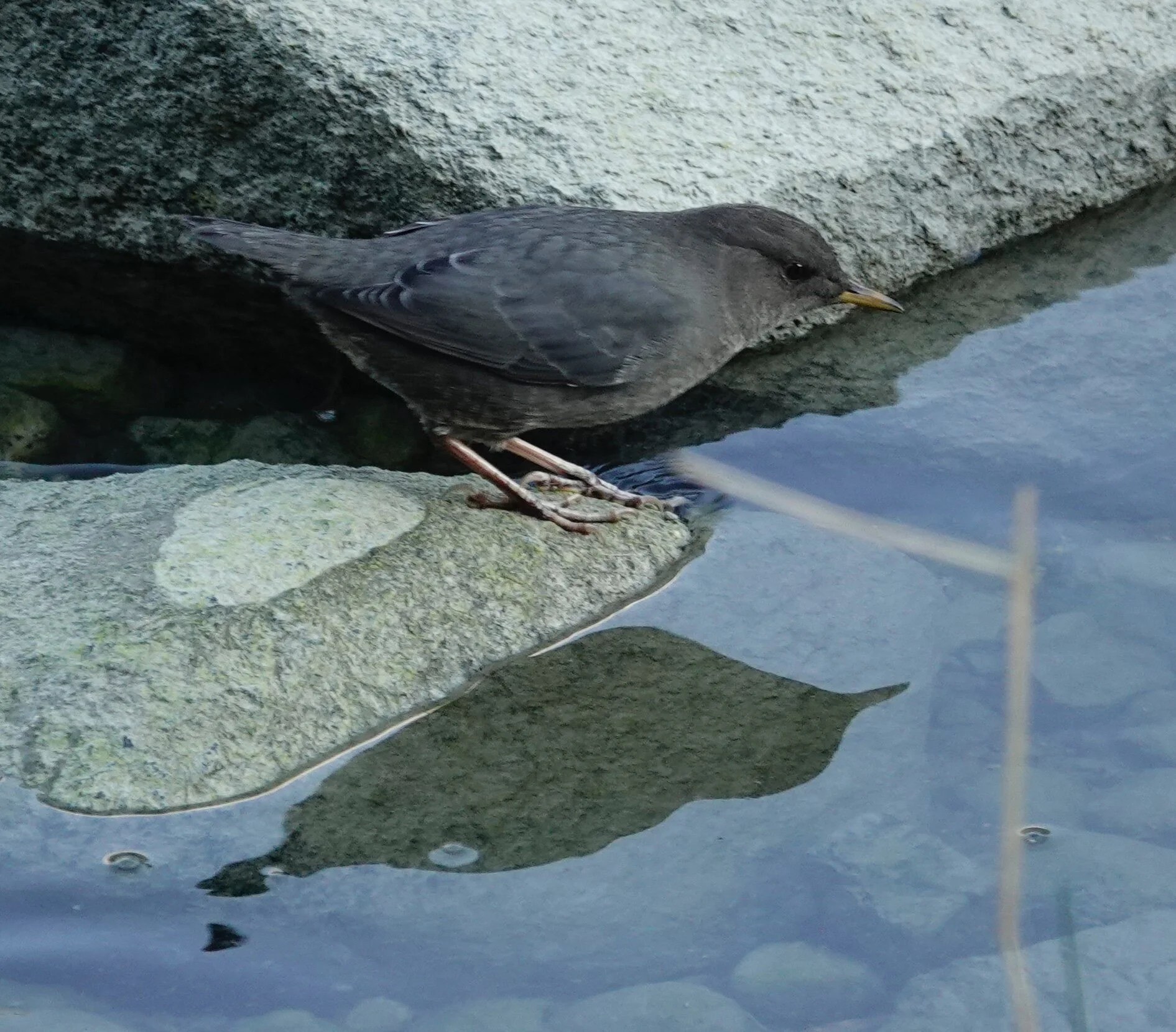
The American Dipper, once called the Water Ouzel — water because of its favored habitat and ouzel because it looks like what I imagine an ouzel would look like.

Eurasian Collared-doves in love.

Eurasian Collared-doves in love.

Canada Geese aren’t afraid of sticking their necks out.

When goldfish attack.

There is a song called “Fish Heads” by Barnes & Barnes. This is fish heads by Bald Eagles.

Chilkoot Lake in Haines, Alaska. Sadly, this lovely spot has become the scene of a tragic mudslide.

Do-re-mi-fa-so-la-ti.
Let's see if I can make it easy.
Doe, a deer, a female deer.

The Nebraskan told me, “Badgers? We ain’t got no badgers! We don’t need no badgers! I don’t have to show you any stinking badgers!” I found one on a far hill. I expect it was long after the badger had found me.

The Nebraskan told me, “Badgers? We ain’t got no badgers! We don’t need no badgers! I don’t have to show you any stinking badgers!” I found one on a far hill. I expect it was long after the badger had found me.

It was a good day at the duck races. I bet on the Cinnamon Teal. Everyone else bet on the Blue-winged Teal.

Cinnamon Teal sounds good and looks good.

The Blue-winged Teal make a cute couple.
Naturally
There was a soft wind as I looked out a window and paid attention.
Birds are a way to experience joy and wonder. They are adorable and outdoorable. I watched a brown creeper fly from the base of one tree to the next, foraging upward each time. A nuthatch moves up, down and sideways on a tree. A fox with a plush nose warmer (tail) ran past. Ironwood and red oak demonstrated marcescence, meaning having withered, persistent leaves. Ironwood makes great tool handles and posts.
There were four chickadees on one platform feeder on Thanksgiving. There are few things more cheering than a chickadee, but I seldom see four of the hyper-vigilant birds on a single feeder. Starling and house sparrows were present in good numbers. Some people consider them the lima beans of birds. Dark-eyed juncos were here and there. They're called snowbirds. John James Audubon wrote, "So gentle and tame does it become on the least approach of hard weather, that it forms, as it were, a companion to every child. Indeed, there is not an individual in the Union who does not know the little Snow-bird, which, in America, is cherished as the Robin is in Europe." A vinaceous (of the color of red wine) purple finch male joined the day and an opinionated blue jay piped up.
I used to wish for a snow day, now I wish for a snowy owl
Thanks to the International Owl Center in Houston, Minn., I listened to Roar Solheim, the Senior Curator of Zoology at the Natural History Museum at Agder University in Norway. Solheim has been studying owls for over 50 years after a pygmy owl inspired his interest. He spoke of snowy owls. Solheim said snowy owls don't mate for life, and it's difficult to tell the sexes apart. The male becomes paler with age. The owls typically weigh about 4 pounds and are agile enough to catch birds in the air. Solheim told of one catching a pigeon in flight. They prey primarily upon mammals like lemmings and voles but take waterfowl, ptarmigan and other prey. Solheim called snowy owls critically endangered with only 14,000 breeding pairs in the world. A clutch is generally six to eight eggs, with the possibility of an owl living 20-25 years.
The Feather Thief
I read an interesting book titled, "The Feather Thief: Beauty, Obsession, and the Natural History Heist of the Century" by Kirk Wallace Johnson who stumbled upon a story about a feather underground that refused to adhere to the law. Johnson investigated an unlikely ornithological crime caper, the theft of 299 rare bird skins from a British Natural History Museum in Tring, which has a collection of over 750,000 bird skins. Johnson dove into a culture of rare and exotic bird trafficking, and the insular world of fly-tying enthusiasts. There is a certain community of flytiers with an unquenchable thirst for feathers from the Indian crow, king bird-of-paradise, blue chatterer (cotinga), the resplendent quetzal, bowerbird and others to be used to recreate outlandish Victorian salmon flies, some of which used the feathers from 15 species. They collect rare and valuable bird feathers and pay exorbitant prices for the most exotic ones to use in the art of making intricate fishing lures. Edwin Rist, an accomplished student musician (a flutist) and avid flytier, stole the rare bird skins worth $1 million. He wasn't a fisherman. Johnson said salmon couldn't care less about the absurd architecture of the flies. One bird skin, not necessarily stolen from the Tring, sold for $6000 on the black market.
Johnson touched on another abuse of feathers. At one time, 200 million birds were killed each year for the millinery trade. It took as many as 1000 snowy egrets to yield a kilo (approximately 2.2 pounds) of feathers. In 1886, an ounce of snowy egret mating plumes fetched $32. Gold was under $20 an ounce. Conservation groups railed against this abuse, and the feather trade and its lobbyists ran a campaign filled with animosity and half-truths while denigrating their opponents. It led to a ban on such use of feathers and it was determined that wildlife should be preserved in their natural state.
Q&A
"I saw a hawk with feathered legs. What kind was it?" It was a rough-legged hawk. "Rough-legged" refers to those feathered legs. It, the ferruginous hawk and the golden eagle are the only American raptors to have legs feathered to the toes.
Thanks for stopping by
"Remember, we all stumble, every one of us. That's why it's a comfort to go hand in hand." — Emily Kimbrough
"Sunshine is delicious, rain is refreshing, wind braces us up, snow is exhilarating; there is really no such thing as bad weather, only different kinds of good weather." ― John Ruskin
Do good.
©Al Batt 2020

The Steller’s jay has one of the most often misspelled bird names. Despite that, it remains stellar. Photo by Al Batt taken in Alaska

A squirrel working on getting its Beaver Badge.

Each year around this time, good Minnesotans must learn how to walk on the ice. That includes Mallards. We had forgotten this important survival technique during the warm weather.

Water most fowl.

I’ve spent my life trying to learn how to sleep standing up. It seems as if that would be a useful skill.

I have the memory of an elephant. I can prove it. I remember seeing this pachyderm.

There had been dancing lessons for Canada Geese held on the public beach.

Why did the Bald Eagle cross the road? To get to the cross on the other side.

A Common Merganser on the Straight River. There was only one, so I reckon it’s an uncommon Common Merganser.

An American Goldfinch disguised as winter. The meteorological winter began December 1.

“You talkin' to me? You talkin' to me? You talkin' to me? Then who the hell else are you talking...you talking to me? Well, I'm the only one here. “ — Travis Bickle the Bald Eagle

A Bald Eagle uses an eagle eye in an attempt to see what the deal is with 2020.

I hoped the Bald Eagle was OK, but the drooping wings concerned me.

Why did the Bald Eagle cross the road? The eagle could see many roads from its perch on this lovely cross.

Why did the Bald Eagle cross the road? The eagle could see many roads from its perch on this lovely cross.

I asked myself if I could ever see too many Steller’s Jays. I think not.

It was so foggy, I could barely tell it was a Brown Bear.

Did Anne Murray sing of this junco or the Snow Bunting in her famous song “Snowbird”?

The Harris's Sparrow was named after Edward Harris, Audubon's pal and a horse breeder. The breeding range of this species is all in Canada.

The oldest known bald eagle in the wild was at least 38 years old. It was hit and killed by a car in New York in 2015. Photo by Al Batt
Naturally
I watched a nuthatch take peanuts from a feeder. It was a white-breasted peanuthatch. A grumpy-looking bird, either the bluebird of crankiness or the bluebird of Minneapolis perched nearby. I studied squirrels gathering leaves at the tops of the trees. They were nest contractors.
This is an irruption year for finches. Pine siskins have been numerous and we’ll likely be seeing common redpolls. I'm keeping sharp eyes out for evening grosbeaks. I've had four people in southern Minnesota and northern Iowa tell me they'd seen these beautiful yellow, black and white birds. The birds are good eaters and when they visit a feeder, they're like hogs at a trough. There was a good crop of spruce budworms in the north this year. Those are prime food for the grosbeak nestlings and produced a good crop of grosbeaks.
I've been a member of the board of the American Bald Eagle Foundation (ABEF) in Haines, Alaska, for a goodly number of years. Each year, we hold a festival where people come from all over to see the eagles and other wildlife. Smithsonian Magazine did an article recently titled, "Behold the Largest Congregation of Bald Eagles in the United States." The subtitle was, "Every November, hundreds if not thousands of the birds of prey gather in Haines, Alaska, to feast on salmon." The festival was canceled this year because of COVID-19 and the Canadian border being closed. A friend, Cheryl Roberts of Haines, drove the route along the Chilkat River where the birds typically congregate and counted 25 eagles. Another friend, Dave Olerud of Haines, drove the same road and counted 20 eagles. If there was a festival this year, we'd have had to put up cardboard cutouts of eagles. Low salmon runs are believed to be the cause for the poor eagle crowd and combined with a poor berry season has caused bears to seek other food sources. Add that the local landfill has become more secure and you have bears raiding things like garages in search of food. At least 40 brown bears were killed, some to protect property, in Haines during the regulatory year running July — June. Those numbers are unprecedented as the previous high was 22. Residents were cautioned to do a better job securing bear attractants. In other sad news, a wild brown bear broke in and killed Caesar, a 16-year-old alpaca and unofficial mascot of the zoo in Anchorage. Wildlife officials euthanized the bear.
At the ABEF, a magpie got into the mew of Bella, a bald eagle. There was no damage done to either bird and the two were seen perched on the same roost.
Q&A
"What is the chicken hawk?" The misleading moniker is typically applied to three raptors. The Cooper's hawk is the one I first think of. It's also nicknamed big blue darter, hen hawk, quail hawk, striker or swift hawk. The sharp-shinned hawk is also called bird hawk, bullet hawk, little blue darter or slate-colored hawk. The red-tailed hawk is the other bird of prey.
"How many bald eagles spend the winter in Minnesota?" I don’t know the number. The eagle is a regular in winter in southeastern Minnesota and other parts of Minnesota where there is open water. Wabasha, Read's Landing, Camp Lacupolis and the surrounding riverfront areas hold lovely viewing spots for wintering bald eagles. The birds overwinter in the Red Wing and Wabasha areas near the Mississippi River, where the current of the inflowing Chippewa River maintains open water.
Susan Wegner of Maine wrote, "Here is a bird plumage question for you. After watching the gyrations of little birds at the feeders, I became aware of the white-breasted nuthatch’s chestnut-colored "undergump" as the Norwegians say. Or undertail coverts as my 1980 Peterson says. So, rather than ask the "source of all knowledge" (internet through google search), I thought I would ask you, humorous human source of bird knowledge. So why the colors down under?" It's related to courtship. Arthur Cleveland Bent wrote in 1948, "Standing back to her, he bows slowly downward as he sings, then in the interval before another song he straightens up, then bows as he sings again. The songs come with perfect regularity over and over again and can thus be recognized even in the distance as the courtship song. We may imagine what a changing color scheme is presented to the female bird, if, as his song invites her to do, she glances his way — the black of his crown and his rough raised mane, then the blue-gray of his back, then the variegated black and white pattern of his expanded tail, then, perhaps, at the end of his bow, a flash of ruddy brown."
Thanks for stopping by
"I would maintain that thanks are the highest form of thought; and that gratitude is happiness doubled by wonder." ― G.K. Chesterton
"Be curious, not judgmental." — Walt Whitman
Do good.
©Al Batt 2020

Red squirrels have cute noses.

It’s a bat house.

The Mallard is probably one of our most researched birds.

This is the way a Mallard wears a mask.

The work of a skilled beaver — or not.
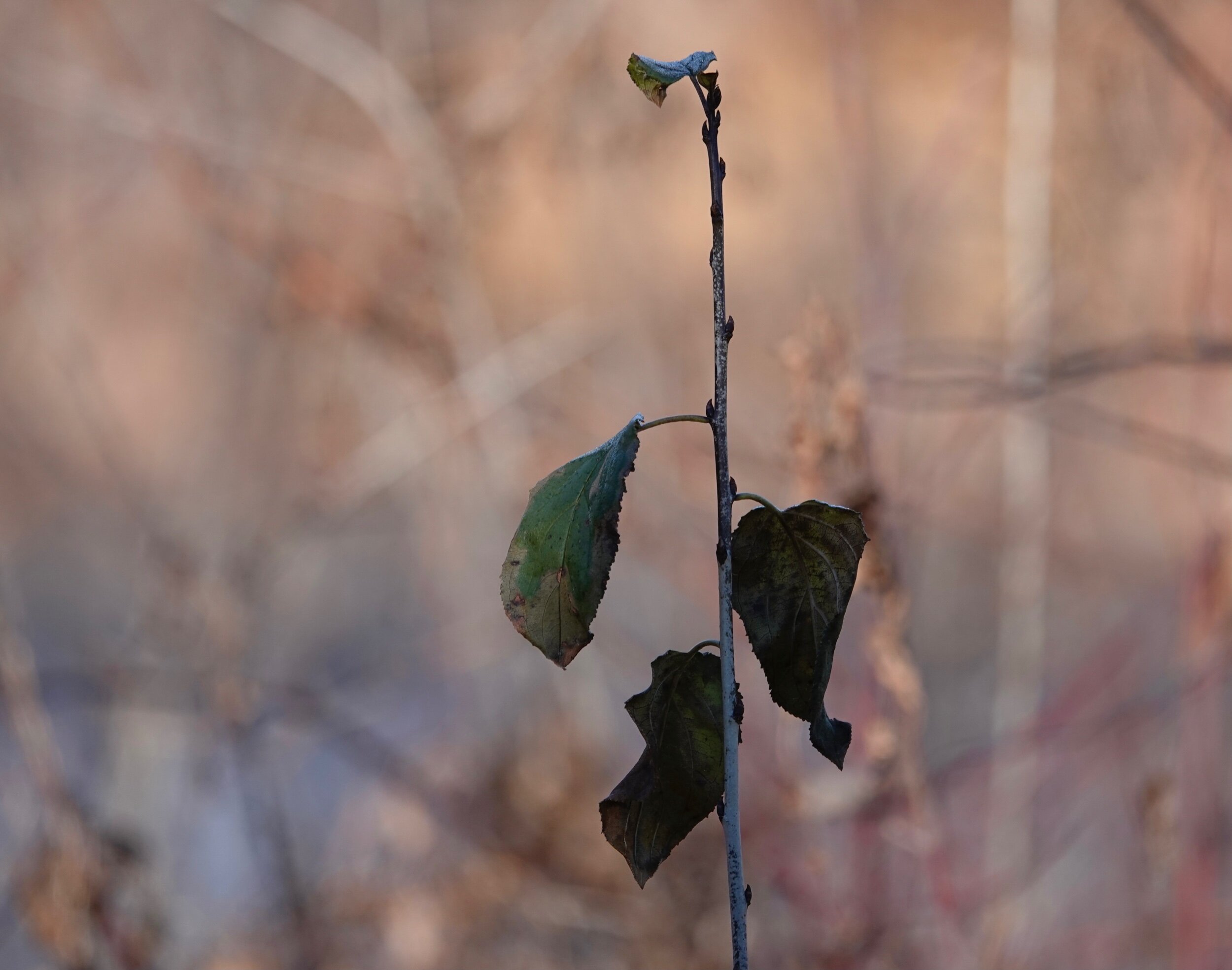
November is some summer, a bit of fall and a bunch of winter.


From the Hammer Museum in Haines, Alaska.

The Steller’s Jay is black and blue just as I was during my football playing days.

The Steller’s Jay has one of the most often misspelled bird names. Despite that, it remains stellar.

The weather forecast in Sitka, Alaska, had been for humpback whale showers.